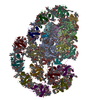+Search query
-Structure paper
| Title | Structural insights into the assembly and energy transfer of the Lhcb9-dependent photosystem I from moss Physcomitrium patens. |
|---|---|
| Journal, issue, pages | Nat Plants, Vol. 9, Issue 8, Page 1347-1358, Year 2023 |
| Publish date | Jul 20, 2023 |
 Authors Authors | Haiyu Sun / Hui Shang / Xiaowei Pan / Mei Li /  |
| PubMed Abstract | In plants and green algae, light-harvesting complexes I and II (LHCI and LHCII) constitute the antennae of photosystem I (PSI), thus effectively increasing the cross-section of the PSI core. The moss ...In plants and green algae, light-harvesting complexes I and II (LHCI and LHCII) constitute the antennae of photosystem I (PSI), thus effectively increasing the cross-section of the PSI core. The moss Physcomitrium patens (P. patens) represents a well-studied primary land-dwelling photosynthetic autotroph branching from the common ancestor of green algae and land plants at the early stage of evolution. P. patens possesses at least three types of PSI with different antenna sizes. The largest PSI form (PpPSI-L) exhibits a unique organization found neither in flowering plants nor in algae. Its formation is mediated by the P. patens-specific LHC protein, Lhcb9. While previous studies have revealed the overall architecture of PpPSI-L, its assembly details and the relationship between different PpPSI types remain unclear. Here we report the high-resolution structure of PpPSI-L. We identified 14 PSI core subunits, one Lhcb9, one phosphorylated LHCII trimer and eight LHCI monomers arranged as two belts. Our structural analysis established the essential role of Lhcb9 and the phosphorylated LHCII in stabilizing the complex. In addition, our results suggest that PpPSI switches between different types, which share identical modules. This feature may contribute to the dynamic adjustment of the light-harvesting capability of PSI under different light conditions. |
 External links External links |  Nat Plants / Nat Plants /  PubMed:37474782 PubMed:37474782 |
| Methods | EM (single particle) |
| Resolution | 2.82 - 3.3 Å |
| Structure data | EMDB-35018, PDB-8htu:  EMDB-35026: PpPSI-L overall map  EMDB-35027: Small Photosystem I moiety of Large Photosystem I from Physcomitrium patens  EMDB-35028: LHCII moiety of Large Photosystem I from Physcomitrium patens  EMDB-35033: OutLHCIs plus Lhcb9 moiety of Large Photosystem I from Physcomitrium patens  EMDB-35034: Outer LHCIs plus Lhcb9 moiety of Large Photosystem I from Physcomitrium patens processing with DeepEMhancer |
| Chemicals | 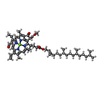 ChemComp-CHL:  ChemComp-CLA: 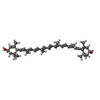 ChemComp-LUT: 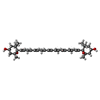 ChemComp-XAT: 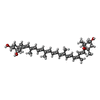 ChemComp-NEX:  ChemComp-LHG:  ChemComp-BCR:  ChemComp-LMG: 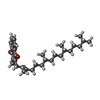 ChemComp-PQN:  ChemComp-SF4: 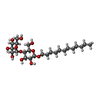 ChemComp-LMT:  ChemComp-DGD:  ChemComp-HOH: |
| Source |
|
 Keywords Keywords |  PHOTOSYNTHESIS / Lhcb9 / PSI PHOTOSYNTHESIS / Lhcb9 / PSI |
 Movie
Movie Controller
Controller Structure viewers
Structure viewers About Yorodumi Papers
About Yorodumi Papers




